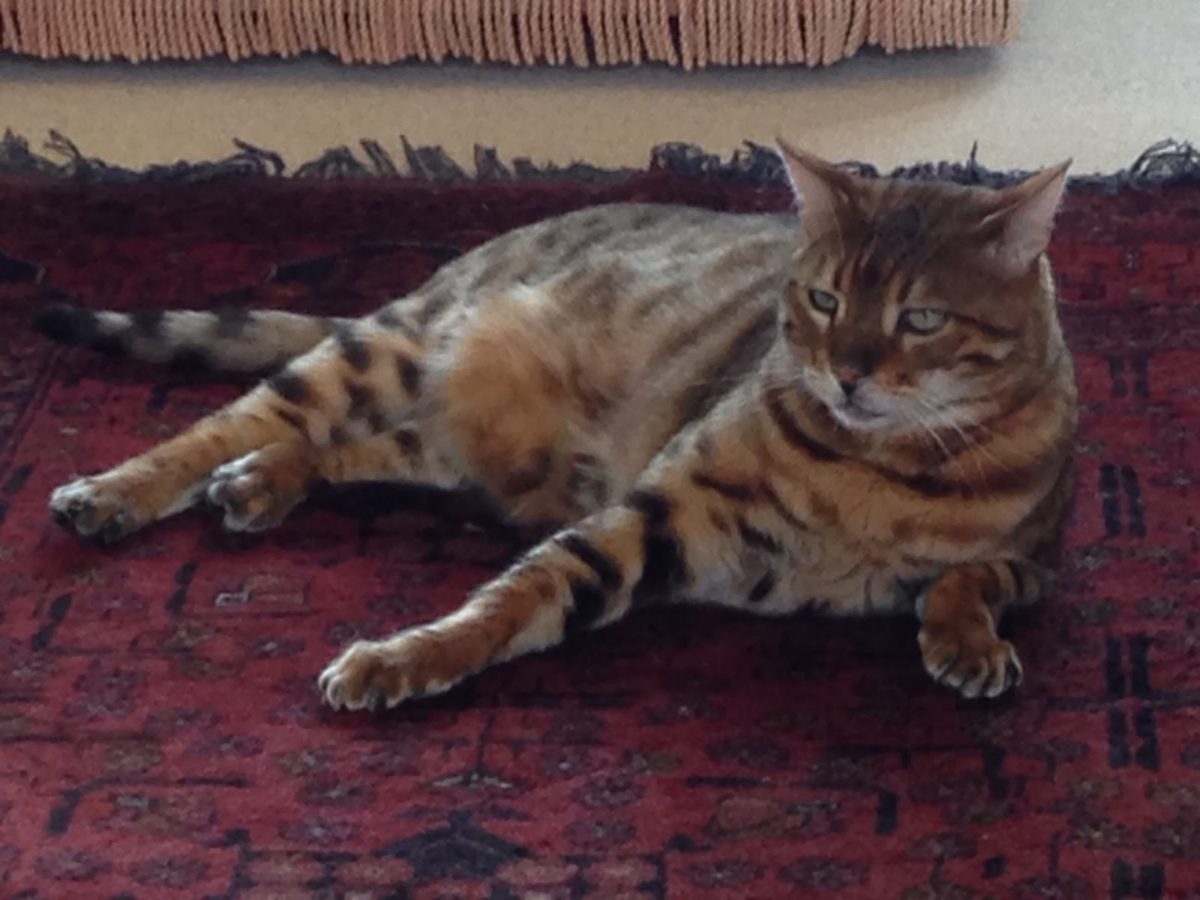 Display with many of the big cats and some species of wildcat at the Zoology Museum, Kaunas. From left to right, top row: spottted leopard, cheetah, cheetah cub, spotted leopard. Top row of case in the centre: jungle cat, (seated), ocelot, badly stuffed caracal, snow leopard, next row down: deteriorating specimen of a serval and cubs, Pallas cat, bottom row: tigers and cubs.
Display with many of the big cats and some species of wildcat at the Zoology Museum, Kaunas. From left to right, top row: spottted leopard, cheetah, cheetah cub, spotted leopard. Top row of case in the centre: jungle cat, (seated), ocelot, badly stuffed caracal, snow leopard, next row down: deteriorating specimen of a serval and cubs, Pallas cat, bottom row: tigers and cubs.
Category: What are the big cats?
Some of the British big cats reported from Suffolk and elsewhere don’t match the description of any known species of big cat or wildcat. Some of these may be hybrids of different species of feline, or even hybrids of exotic wildcats and feral domestic cats. Such hybrids have been recorded in captivity and in the wild.
Mystery Animals of Suffolk looks at possible hybrid big cats. See also Hybrid Felines on the Messy Beast website.

I’ve heard a lot about Bengal cats, and how Britain’s big cats are supposed to be misidentified Bengal cats, how the genes of Bengal cats and other exotic breeds are supposed to have got into the feral cat population and turned them into something altogether different… and bigger. I heard that Bengal cats were real characters, they liked to go for walks on leads, and that they were such a handful behaviourally that they were often abandoned. I recall reading Big Cat Rescue saying that they used to get call-outs from people saying there was a “Florida panther” on the loose, attacking Alsatians and in some cases frightening old ladies, but when they got there it was often just an ever so slightly bigger than usual Bengal cat that had gone AWOL or been turned loose.
Legends tell of how the original Bengal cats, hybrids of the Asian leopard cat (Prionailurus bengalensis bengalensis) were named after one that was found in the Bay of Bengal on the approaches to Bombay (Mumbai) by early East India Company sailors, swimming out towards them. Like most exotic stories on the origins of exotic cat breeds, it’s probably nonsense. (Burmese cats weren’t originally from Burma, but from Thailand, “Bombay” cats were bred in Virginia, and so on.) We know they were deliberately crossbred. The UK Dangerous Wild Animals Act 1976 came in largely because Bengal cats (and wolf dogs, crosses between dogs and wolves) were turning up in the country, with the authorities unsure how they would turn out, the law banned wolfdogs (they’re now legal) and required a license for Bengal cats that had more leopard cat genes than “F4” (fourth generation). Bengal cats are known for their “confident” temperament (a bit of an understatement!) Breeders sell them for anything up to £800 each.
I finally got to meet a Bengal cat face to face. He lives somewhere in the Blyth Valley in Suffolk, looked after by a fosterer. He came from a smaller house at the other end of the same village, but he obviously decided he didn’t like his accommodation and fancied living in a bigger house and garden nearby, so he abandoned his humans and moved on in his new chosen home – fairly typical Bengal cat behaviour, I am told!
He is very vocal, quite friendly, and the two things that really struck me about him are that he is very muscular – at first glance he looks a little on the overweight side until you see that he is all muscle. Secondly, his fur is very short and shiny, it has a different feel to most cat fur. His back is also different to a mainstream domestic cats – a bit more arched. His toes seem a little longer too. The vestigal pad that most cats have towards the back of their paws is much more pronounced.
And check out his markings – quite unlike anything you’d see on a domestic cat – those leopard-like rosettes!
https://www.youtube.com/watch?v=Zys6Ha5gTnM